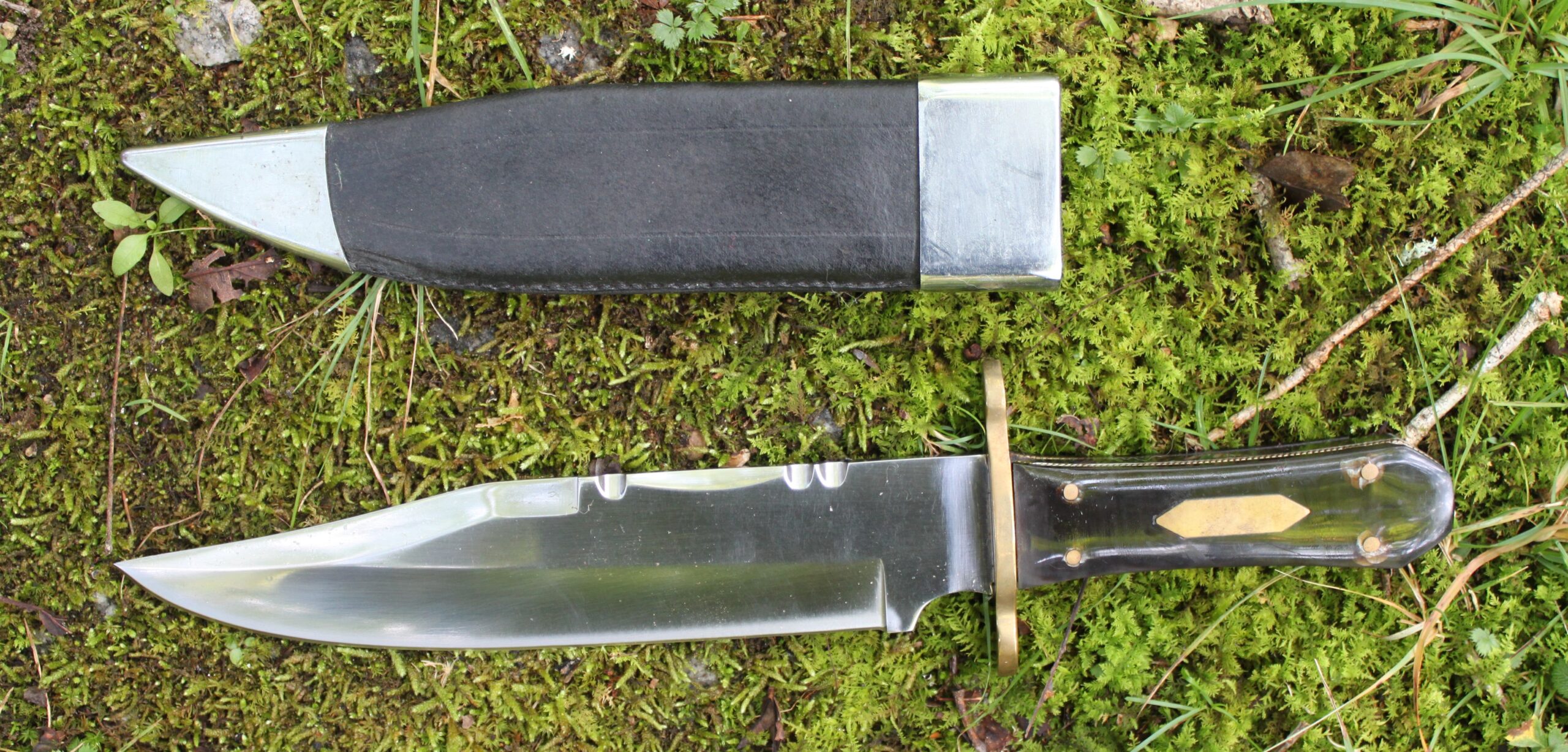
By Jim Dickson | Contributing Writer
There are many deer hunters who only take a pocket size pocketknife into the woods for field dressing and then bring their deer back to camp for skinning and butchering.
This aspect of deer hunting has not been covered in magazine articles to my knowledge.\
By pocketknives, I mean folding knives that fit comfortably in a pocket such as the traditional Barlow and jack knives. An overall length of 3¼ inches folded is a good standard here.
For over 100 years many woodsmen have stretched this a bit to cover the 4 3/8-inch swing guard folding lockblade made by Case Knife Co. This knife was apparently made with this job in mind as it has proved so successful at it. It fits in the hand better than other pocketknives; the swing guard keeps the blade separated from the hand, and it is light and slim so that it doesn’t weigh down your pocket. It should be noted that folding knives that require a belt sheath are not carried in the pocket and do not qualify as pocketknives. With the exception of small knives clipped inside a shirt, pocketknives with a clip on the side to keep them in a pocket can hurt the back of your hand if you have occasion to thrust your hand in that pocket.
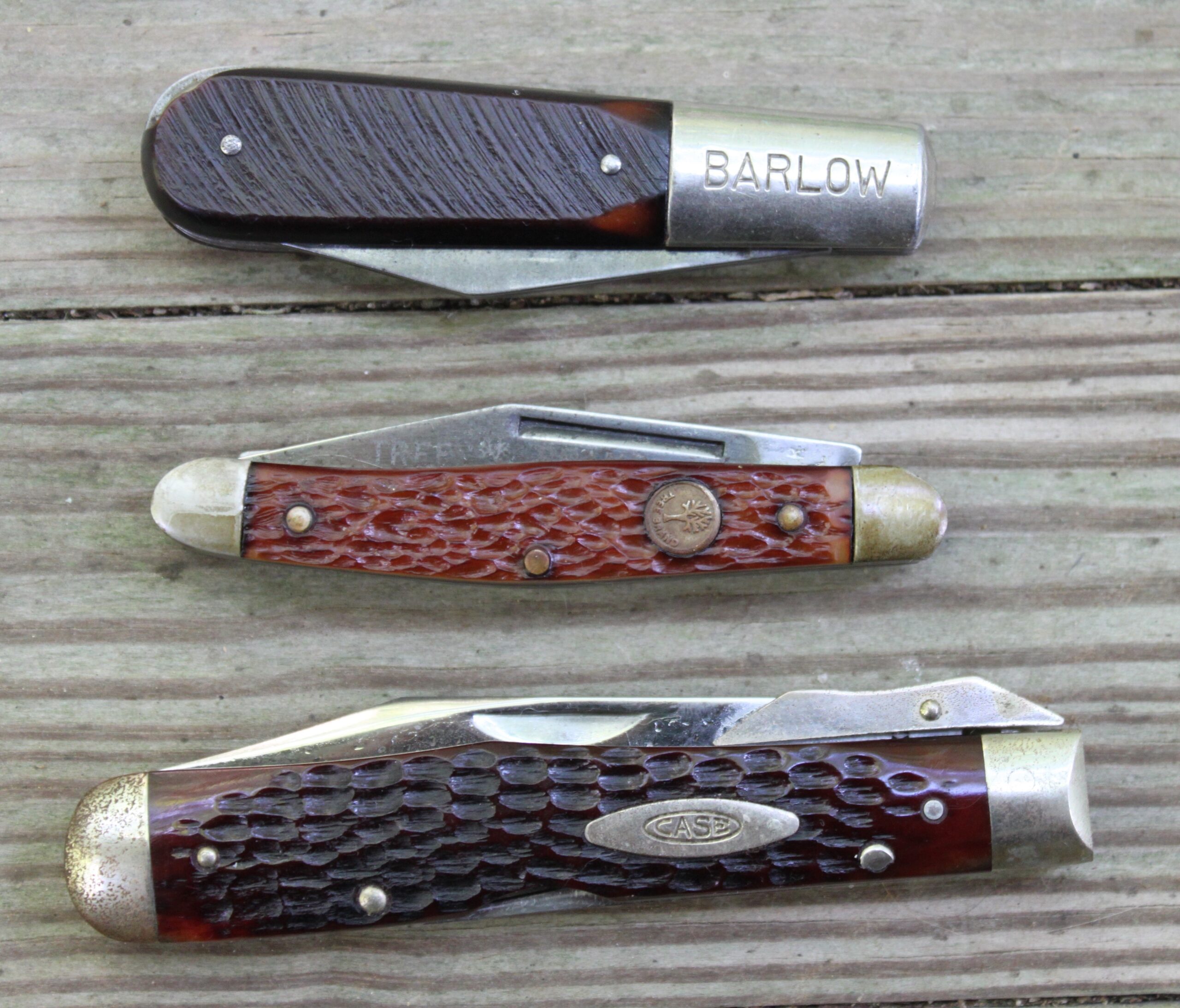
Once the deer is gutted and brought to camp there are a variety of tools to make the job easier. A gambrel to hoist the deer up for skinning and butchering heads the list. You can now make use of the tools used in meat packing plants. The classic 5-inch sheep skinner and the 6-inch skinner are used by professionals. Take care not to cut through the hide.
As a former Alaskan trapper it pains me to see good hides ripped off and discarded when they could have been made into rugs with the fur on or made into buckskin gloves and clothing.
Butcher and carving knives typically have a 12-inch blade. When it comes time to cape out the deer head for a mount the pen knife blade on an old-fashioned Barlow pocketknife is hard to beat. For splitting open the rib cage you can use an axe or a meat cleaver. Yes, you can split it open with a hunting knife and you also can get a cut on the fingers from those sharp, fresh cut ribs while you are doing it if you aren’t careful.
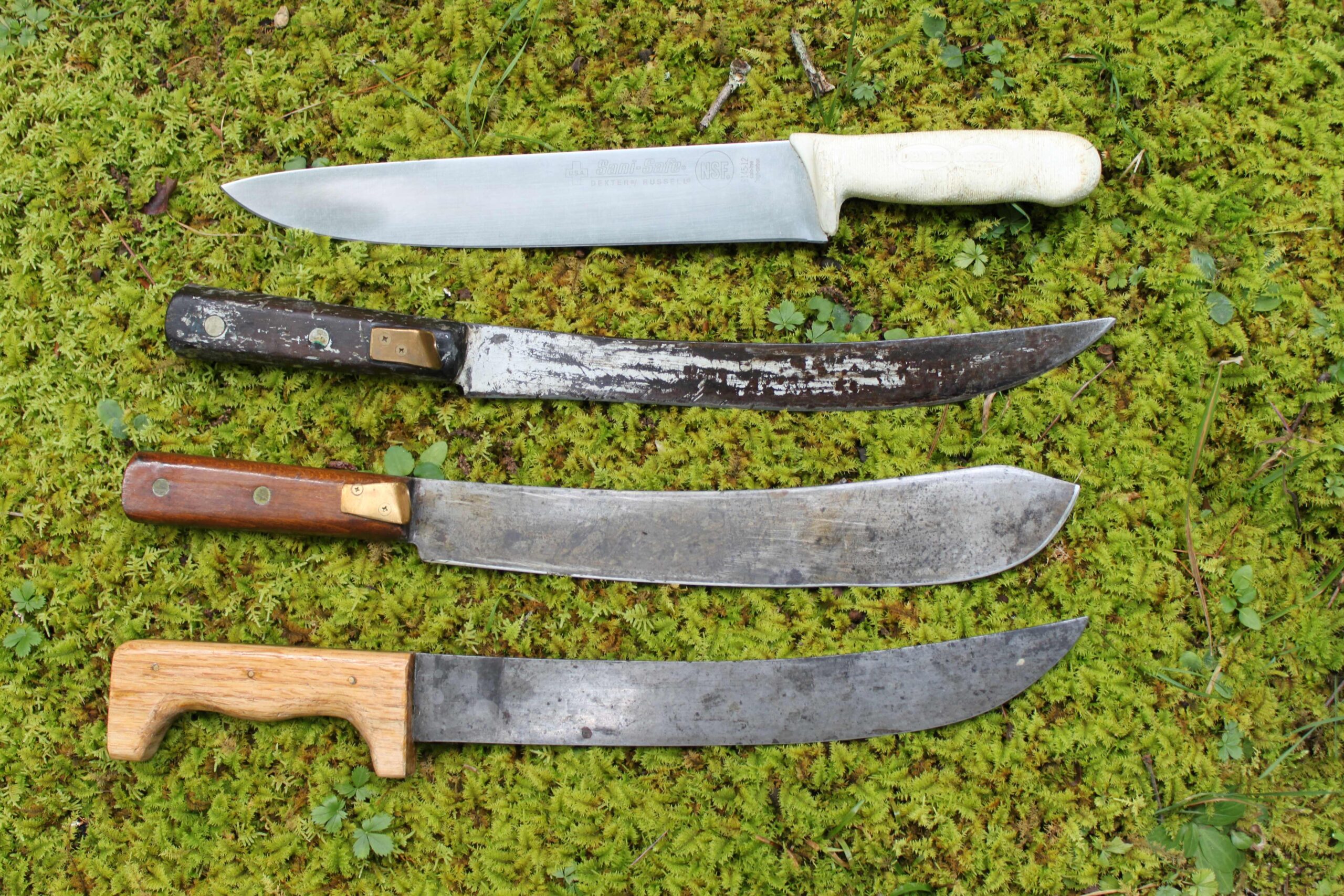
When it comes time to split the carcass down the middle a butcher’s bone saw can be very fast and efficient. I bought an old one from a butcher who had just gotten new a one and I have been very happy with it. If you have sufficient skill at this, you can also use an axe or the old two handed meat cleavers once made for this. Unless you are using them for an 8-hour day job every day you will find that the bone saw is a better choice. It is very fast and much easier to precisely control. It has taken over the meat processing industry, and I am in full agreement that it is the way to go.
You will note the large size of the knives used by professionals. They haven’t got all day to butcher an animal. A professional works fast and efficiently. That means having a big enough knife. A small blade takes multiple strokes to equal the cut of a big blade and the multiple strokes tend to be more ragged than the boss will allow. Trying to use a 4-inch blade instead of a 12-inch blade could cause you to fall so far behind in your quota that you could end up getting fired. The big blades work fast and precisely. They get the job done where a smaller knife cannot. The speed with which they can reduce a cow to steaks is phenomenal.
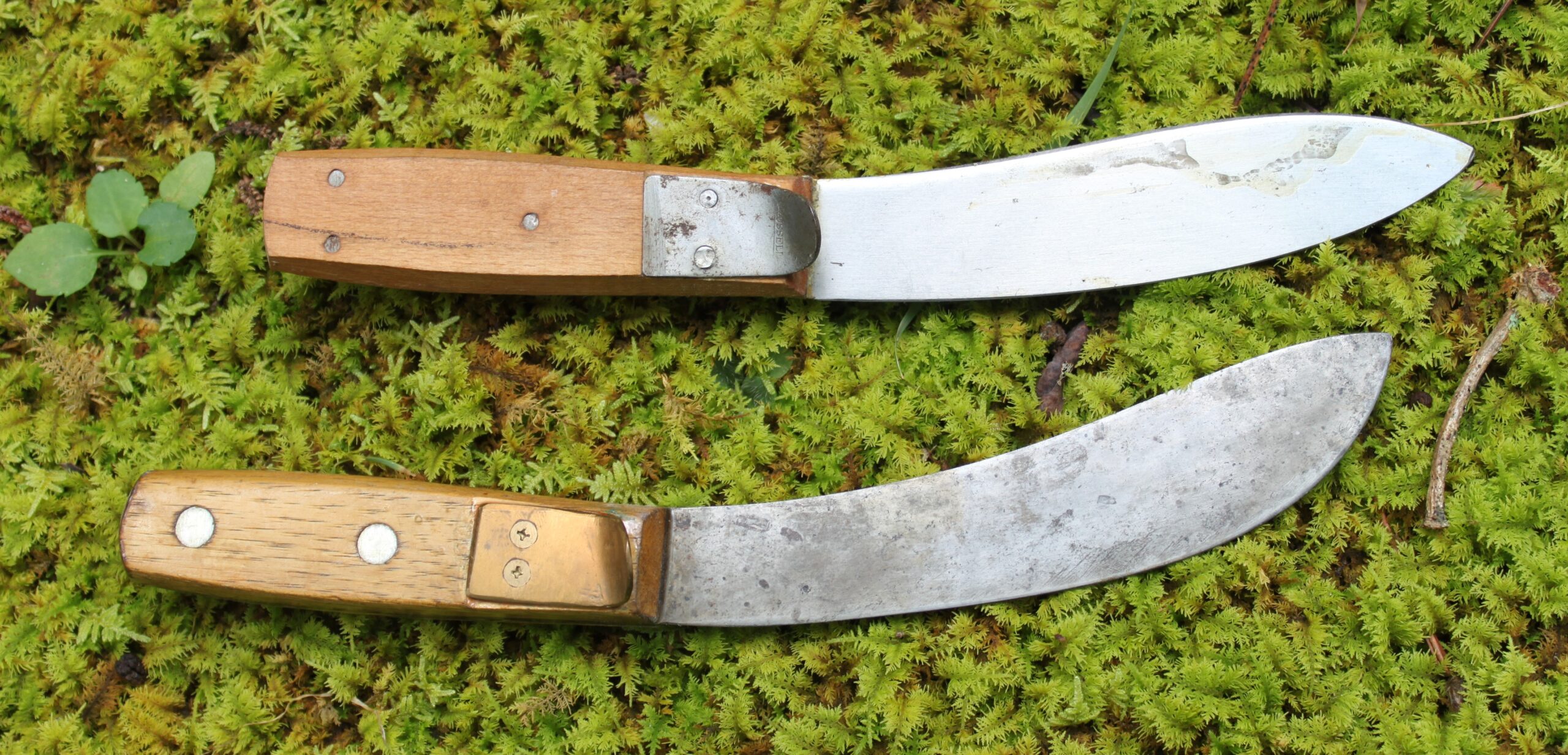
I have never seen a knife advertised as anything but high carbon steel regardless of the fact that said knife may have virtually no carbon or be low, medium, or high carbon steel. Professionals use medium carbon steel because a sharpening steel does not work well at all on high carbon steel. Every time a butcher picks up a knife, he puts the sharpening steel to it. He never lets it get dull. When using these knives you should do the same.
Everything used in processing the game needs to be cleaned with soap and water then oiled afterwards. Blood is extremely corrosive and the fat that gets on the blade can be hard to get off. Scrub your tools immediately after use or you will have an unsanitary rusty mess. Health department inspectors strictly enforce this at the commercial meat packers and butchers for good reason. At the deer camp you are on your own and if you act unprofessionally where sanitation is concerned you have no one to blame if you get sick.
For hunting knives intended to be the only tool you use remember the large knives used by professional in the meat packing industry and don’t be swayed by the salesman’s big lie: “The big knife is the mark of the tenderfoot.” Well if that were true then Daniel Boone with his 11-inch blade knife and the Native Americans and frontiersmen would all have been tenderfeet.
It’s worth noting that the Native Americans and many frontiersmen favored double edge knives. The famed Hudson’s Bay Dag Knife was a staple item in the far North well into the 20th Century with its big broad double-edged blade almost a foot long. It was an indispensable all-purpose tool for Indians maintaining their traditional way of life in the far North. The double edge knife is by far the oldest design dating back to the stone age. It has remained a favorite design as long as man has lived the old way in the wilderness.
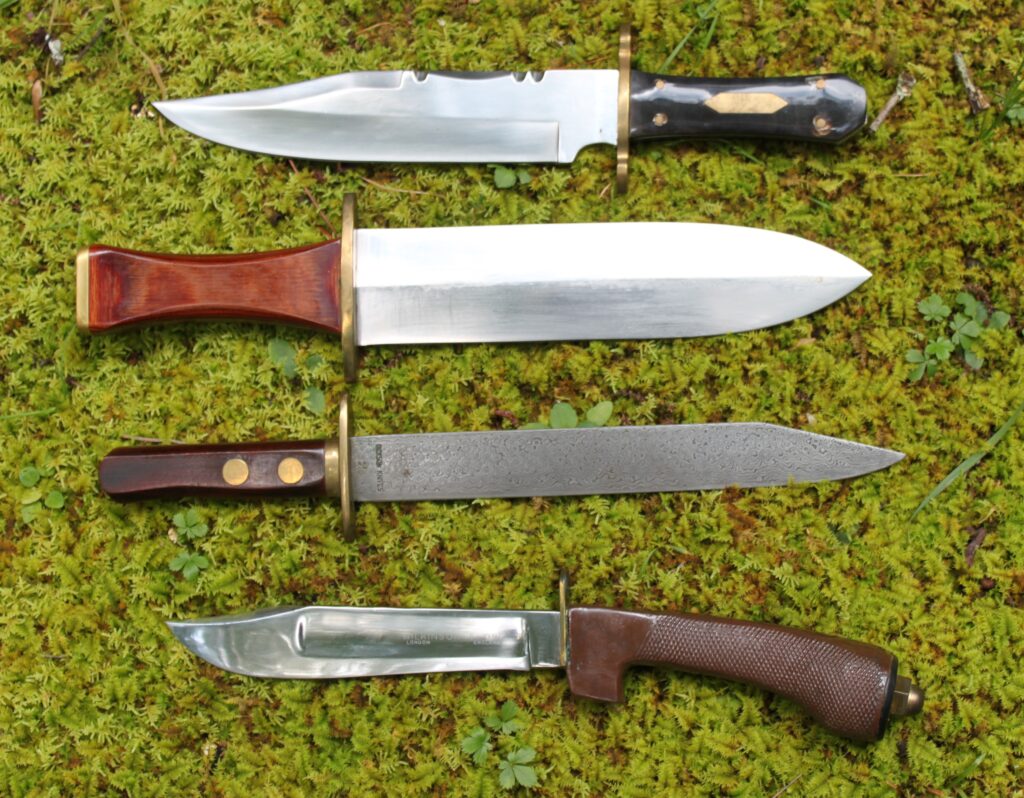
The iconic American knife is the Bowie knife, and it was a favorite all-purpose knife on the frontier where a knife might be called on to defend against man or beast as well as performing all the mundane cutting chores of day to day survival when living in the wilderness. Many of the Bowie knives carried on the American frontier were identical to some of the Viking sax knives having been in continuous Norther European production ever since before the Viking age. Talk about a design that has stood the test of time!
A very important factor in all of these knives success was their size. They were big enough to do light wood cutting and long enough to be efficient at cutting up game. They had to be able to handle ALL
the cutting jobs that crop up on the frontier. Not just some of them. That’s a tall order that sure can’t be filled with a small knife.
If you want to carry a sheath knife my advice is to get one that could handle all sorts of tasks. Then if you ever find yourself in a tough situation you will be well equipped.



